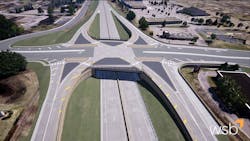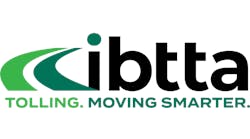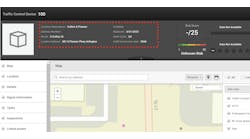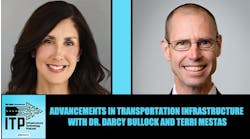By Meg Davis, Contributing Author
Even Roman Roads Don’t Last Forever
From the beginning of time, a good indicator of a society’s level of development has been the efficiency its road system. While many ancient civilizations built roads, the Romans were renowned for their engineering skills including the construction of roads, bridges, aqueducts, and more. The Romans needed to build efficient and durable roads to transport goods and people throughout their vast empire. Maintaining the road networks was a priority for the Romans, and the government was responsible for funding maintenance and repairs of public roads. And although the road network gradually disappeared after the fall of the Roman Empire, it became the basis for infrastructure corridors throughout Europe and the Middle East.
Highway System Transforms U.S., Spurs Mobility, and Increases Commerce
As in ancient Rome, the U.S. requires a safe, reliable, and durable road network to efficiently move people and goods to their desired destinations. And from the day President Dwight D. Eisenhower signed the Federal-Aid Highway Act of 1956, the Interstate System has been an integral part of our life. While created in part to help defend the nation in the event of an emergency, the interstate highway has also spurred and increased the development of commerce throughout the country with trucks transporting everything from durable goods and mail to fresh produce. It is part of the National Highway System (NHS), a network of strategic highways including other roads that comprise the largest highway system in the world.
Investment in America’s infrastructure
With the Interstate Highway now over 60 years old and many other roads and bridges even older, investment in America’s infrastructure is long overdue. Without safe roads and bridges, commerce and business are impacted as is the quality of life for U.S. citizens.
The World Economic Forum now ranks the United States 13 when it comes to the overall quality of infrastructure. And, according to the American Society of Civil Engineers 2021 Report Card, more than 45,000 U.S. bridges and 1 in 5 miles of roads are in poor condition. Of the more than 617,000 bridges across the United States, 42% are at least 50 years old, and 46,154, or 7.5% of the nation’s bridges, are considered structurally deficient, meaning they are in “poor” condition. In fact, the American Society of Civil Engineers (ASCE) gives bridges a C grade. While structurally deficient bridges are not inherently unsafe, they require substantial investment in the form of replacement or significant rehabilitation, and they present a higher risk for future closure or weight restrictions.
Roadways in Distress
America’s roads are critical for moving an ever-increasing number of people and goods. Unfortunately, the growing wear and tear to our nation’s roads has left 43% of our public roadways in poor or mediocre condition, garnering a D grade from ASCE. The growing backlog of road rehabilitation in the U.S. has resulted in motorists paying over $1,000 each year in wasted time and fuel. Additionally, while traffic fatalities have been declining, there are still more than 36,000 people who die on the nation’s roads every year, and the number of pedestrian fatalities is on the rise. To make our roads safer, federal, state, and local governments need to prioritize strategic investments dedicated to improving and preserving roadway conditions that increase public safety on the system we have in place, as well as plan for the construction of new roadways.
Challenges and Opportunities
The Infrastructure Investment and Jobs Act (IIJA) was established to provide funding mechanisms to enable state DOTs and their partners to invest in our roads and bridges. And the historic Bridge Replacement, Rehabilitation, Preservation, Protection, and Construction Program (Bridge Formula Program), will allow states to fix an estimated 15,000 bridges nationwide.
But there are challenges in addition to obtaining funding that impacts the construction, rehabilitation, and maintenance of our road and bridge infrastructure. Once that funding becomes available, DOTs and their partners may face staffing challenges as they plan and design infrastructure projects. In addition to a competitive job market for engineers, the retirement of experienced personnel, sometimes called the “silver tsunami,” could leave DOTs and their partners without experienced engineers and the knowledge base needed to expeditiously produce project designs and get them out to bid. It will be important to proactively shape the future transportation workforce, providing resources to fill skills gaps, recruiting future workers and providing the tools and technology to get the work done.
Investment in the Future
It is important to invest in the future through programs that encourage younger generations to pursue careers in the transportation industry. For example, the American Association of State Highway and Transportation Officials’ (AASHTO) TRAC & RIDES program is also part of their effort to address transportation workforce issues, and it is designed to attract new entrants to the industry. The educational outreach program is sponsored by AASHTO with state department of transportation and industry partner support. TRAC & RIDES is an acronym for Transportation and Civil Engineering and Roadways in Developing Elementary Students. The program seeks to encourage elementary, middle, and high school students to pursue science, technology, engineering, and math or STEM-based careers in the transportation industry.
The Benefits of Digital Delivery and Digital Twins
Innovative technologies and processes can help DOTs and their partners do their jobs better and faster. One such process is digital delivery where projects are delivered using digital models, data, and supporting field tools for roadway design, structures design, and construction. Digital delivery incorporates streamlined processes to manage asset information as it changes through project development. All project elements are contained within a digital model that can include 2D and 3D model elements with attached attributes and references. Contractors and construction inspectors can use digital models on the project site and the as-built deliverables are an accurate representation of the constructed project.
Digital delivery makes it easier to review the design intent and develop high-resolution 3D visuals, providing improved design quality. It can make a significant impact on reducing project cost over-runs and the 3D design enables designers to test “what if?” scenarios to refine constructability and optimize project cost. It improves design efficiency and contractors can benefit from a more complete representation of the design intent delivered in a more directly usable format. This enables enhanced construction planning and less time to extract information. Lastly, digital delivery improves as-built records, saving valuable time. Instead of marking up PDF plans, contractors will collect digital as-built records.
When the Minnesota Department of Transportation received funding to transform TH 169 into a freeway system, they retained WSB to oversee the final design. The project included converting four traffic intersections into interchanges, relocating utilities, and designing roadway, drainage, and bridge elements. WSB selected Bentley’s open modeling, visualization, and construction simulation applications to help save the client over $12 million. WSB anticipates their savings to grow to $15-18 million in 2022. Leveraging Bentley applications saved 18 months relocating utilities and accelerated the construction schedule by three months on MnDOT’s first project to use digital delivery methods. Synchronizing the 3D model with 4D construction scheduling identified potential conflicts, which helped to accelerate construction activities by three months to save USD 485,569. Creating digital twins early in the engineering process facilitated collaboration that supported seamless data and model integration throughout construction and operations.
Digital twins provide civil engineers with the ability to visualize assets across their entire lifecycle to track change and to perform analysis that optimizes asset performance. Contractors, construction firms, and road and bridge owner-operators can leverage digital twins to allow project teams to gain more visibility into the design. Digital twins also allow managers and owners to understand the implications of design decisions early in the process and help them achieve improved performance across the asset lifecycle.
Built in 1938, the existing East 138th Street Bridge in New York needed to be replaced to eliminate vertical clearance issues and optimize vehicle and pedestrian traffic demands. New York State Department of Transportation (NYSDOT) initiated a $48 million project to replace the aging bridge structure with a new 100-foot, single-span bridge. Located in a heavily congested area, the team needed to create the construction sequencing plan and accommodate existing utilities. To achieve this digital context, they required integrated hybrid modeling technology to generate a dynamic 3D model of the complicated superstructure and pedestrian components. NYSDOT wanted to use a digital twin as the primary contract document and public outreach tool for contractors, stakeholders, and the community to virtually visualize the design intent and construction plan. With Bentley’s comprehensive, integrated modeling and iTwin technology, NYSDOT was able to accurately design and generate a digital twin that helped identify and resolve costly issues prior to construction. By providing the contract digital twin to project bidders, contractors could digitally visualize their work to calculate more accurate bids, resulting in the winning contractor’s bid being 15% lower than the engineer’s estimate.
Taking Advantage of IIJA Grants for Digital Delivery
Included in the Infrastructure Investment and Jobs Act is a new $100 million grant program that encourages state departments of transportation to accelerate their usage and deployment of Advanced Digital Construction Management Systems. These systems are generally defined as commercially proven digital technologies and processes for the management of construction and engineering activities including, but not limited to, commercial cloud-based advanced decision-support technologies for infrastructure planning and coordination, commercial building information modeling, and digital 3D design software.
This new grant money, included in the Federal Highway Administration’s (FHWA) Technology and Innovation Deployment Program, allows states to purchase technology platforms, train personnel, develop best practices, and develop guidance to assist in updating regulations to allow project sponsors and contractors to fully capture the efficiencies and benefits of advanced digital construction management systems, among other uses. As digital transformation in the construction and engineering sectors is a priority for the U.S. Department of Transportation (USDOT) and the FHWA, this program is a great way for states to take advantage of this momentum.
Rome wasn’t built in a day and the aging infrastructure in the U.S. won’t be fixed overnight, but with proper planning, funding, tools, technology, and resources we can start laying the foundation for the future. RB



